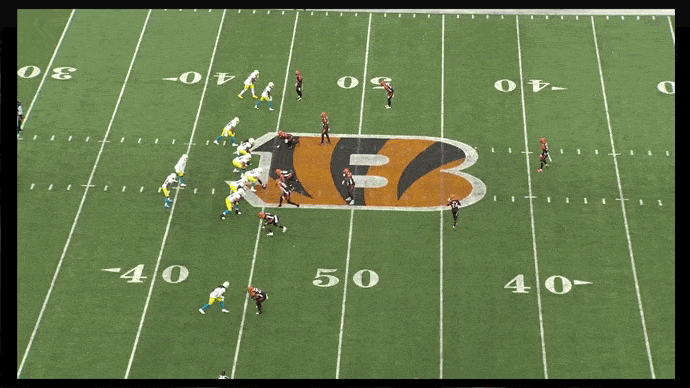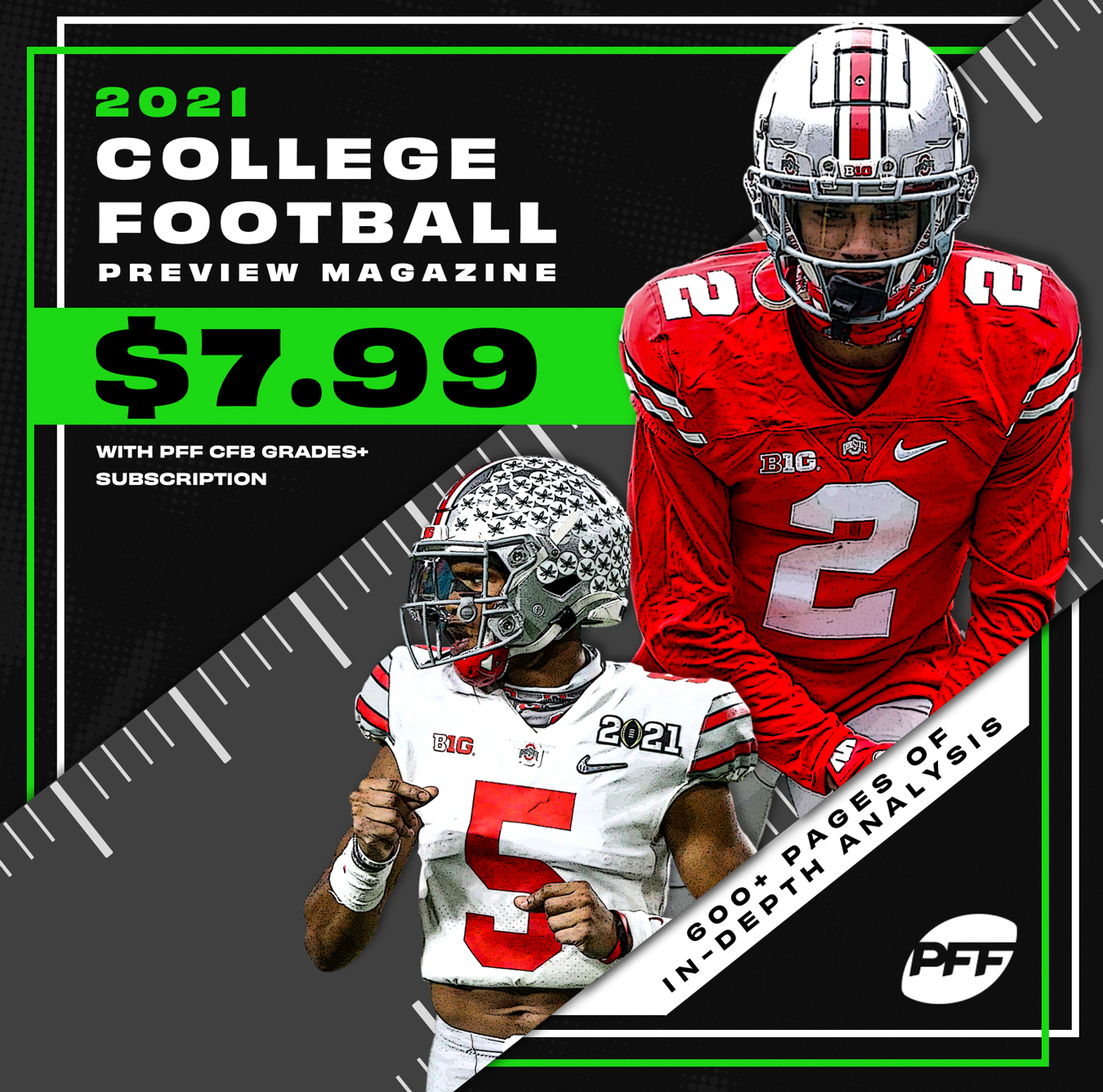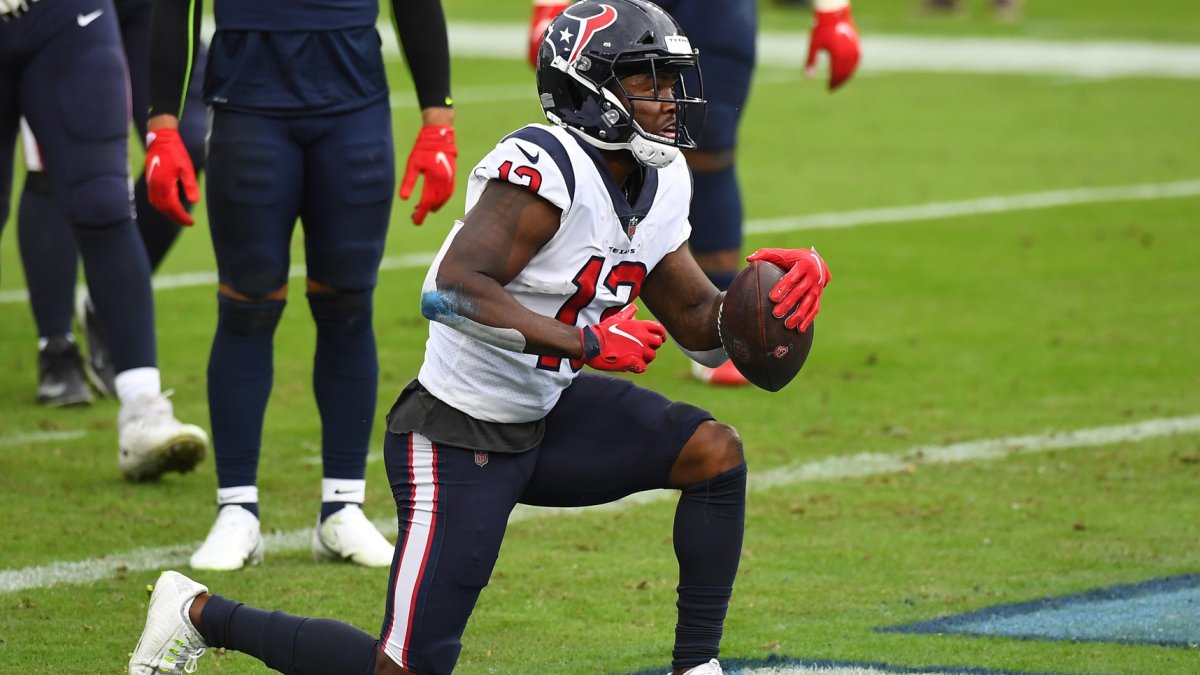There’s a reason why the Houston Texans rank dead last in team ADP on Underdog Fantasy. Their uncertainty at the quarterback position makes the entire offense a major concern.
The drop-off from a player of Deshaun Watson’s caliber to a combination of journeymen Tyrod Taylor, mobile veteran Jeff Driskel and 2021 third-rounder Davis Mills cannot be understated.
Watson ranked third in PFF’s Wins Above Replacement metric and led the NFL in passing yards and yards per attempt in 2020.
But his absence doesn't preclude this team from having fantasy-viable values and sleepers at a suppressed cost.
Subscribe to
2021 Team Preview
One of the first moves the Texans made this offseason was hiring head coach David Culley, most recently of the Buffalo Bills and Baltimore Ravens. His job titles included quarterbacks coach, wide receivers coach and passing game coordinator.
Culley’s experience working with mobile quarterbacks — Tyrod Taylor (2017), Josh Allen (2018), Lamar Jackson (2019-2020) — sheds light on the Texans’ offensive philosophy in 2021 to feature quarterbacks who add value with their legs.
Watson led the NFL in scrambles a season ago, and Taylor ranked top three in the league in scrambles during his last three seasons (2015-2017) as a starter.
But that offensive mindset makes the Mills pick during the 2021 NFL Draft, that much more of a head-scratcher. Mills showed almost no mobility or off-script playmaking at Stanford.
A recent report leaked that Texas A&M quarterback Kellen Mond was the primary target for Houston at pick No. 67, which makes sense due to his dual-threat skill set as a rusher. But Mond never made it to Houston because the Minnesota Vikings drafted him one spot earlier.
The Texans panicked and likely just took the next quarterback on their draft board, despite Mills claiming he had little contact with his new employer during the pre-draft process.
Currently, Mills has been taking snaps as the No. 3 quarterback on the depth chart, giving Taylor the green light to open the season as the starter in offensive coordinator Tim Kelly’s second season in that role.
Retaining Kelly was a sharp move by Culley. 2020 was easily Watson’s best season as a professional, and it’s no coincidence that happened to also occur when Kelly took over playcalling duties. Watson could have easily endured a down year without alpha wide receiver DeAndre Hopkins, but that was hardly the case.
The offense was built around passing (No. 1 pass-play rate, 70%), specifically highlighting Watson’s downfield prowess. Houston ranked first in explosive pass play percentage (18%) last year.
Watson played an integral part in the team’s big-play success, but throwing bombs is also part of Taylor’s skill set. Taylor’s 9.8-yard average depth of target ranks fifth-highest in the NFL since 2015, and his affinity for the deep ball was on full display in 2020.

In Taylor’s singular start (Week 1), he posted a 10.8-yard aDOT with six 20-plus throws. Los Angeles Chargers wide receiver Mike Williams saw over 160 air yards, his second-highest total for the season.
That bodes well for Texans No. 1 wide receiver Brandin Cooks, who finished 14th in deep target share (36%) in 2020.
VALUES
WR BRANDIN COOKS
Cooks’ frequent downfield looks in addition to his 115 projected targets (22nd) make him an incredible value in fantasy drafts. The PFF fantasy projections have pegged as the WR27. Yet, he has a WR42 ADP price tag.
The speedy wideout is a sure-fire bet to beat his ADP; he has finished worse than the fantasy WR16 only once since 2015, and that was due to injury.
The volume is going to be there for the taking with Cooks entrenched as the team’s undisputed No. 1 wide receiver, a role that fans got a glimpse of him in last season after Will Fuller V was suspended. Cooks averaged 22.5 fantasy points per game, 19.4 expected fantasy points per game and a 28% target share in that span.
His highest upside exists with Taylor under center, but he can certainly continue to thrive when/if the team turns to Davis Mills.
Simply put: Cooks will be peppered with targets with Mills under center because the rookie locks onto his first read. He ranked No. 1 in the draft class in the first-read throw rate (71%), and Cooks led the Texans in targets from the quarterback’s first inclination. The sheer passing volume will rise above efficiency woes Cooks endures from the quarterback downgrade.
However, the same cannot be said for the running backs because there simply won’t be enough rushes to go around.

BUSTS
RB DAVID JOHNSON
Running backs need volume to find success in fantasy football. The Texans ranked dead last in plays per game in 2020 (58.8) because they were bottom-dwellers in rushing attempts per game (17.6). The low play volume resulted in their running backs collectively finishing 28th in expected fantasy points.
The lack of run plays on offense likely won't dramatically change in 2021. Houston's 24th-ranked secondary is porous, to say the least, so the offense shouldn't be protecting many leads, which goes hand in hand with running the ball more.
Because Johnson is the presumed starter in the Texans' backfield, there’s a perceived notion that he’s a potential value in the mid-to-late rounds of fantasy drafts. But there’s a reason why he is going so late. Scoring opportunities for Johnson will be far and few between.
To make matters worse, the team also signed former Denver Broncos running back Phillip Lindsay. We could be looking at the league’s ugliest four-headed monster in 2021 between Johnson, Lindsay, Mark Ingram II and Rex Burkhead.
Throw in that Johnson is already 29 years old and coming off a season in which he posted an unsustainable breakaway run rate, and he’s seemingly the next Todd Gurley II or Le’Veon Bell — running backs who were fantasy monsters some years ago but are now left for dead.
SLEEPERS
WR NICO COLLINS
Rookie wide receiver Nico Collins has already drawn praise from veteran teammates Brandin Cooks and Tyrod Taylor for his ability to quickly pick up the offensive playbook. The Texans traded up 20 spots in the 2021 NFL Draft to select Collins with the 89th overall pick, and he looks like the real deal.
The 6-foot-4 wideout ranked second in contested-catch rate (63.2%) from 2018-2019 and looks primed to have an immediate fantasy impact thanks to the Houston Texans’ current wide receiver depth chart looking like a fantasy football dynasty team from 2015.
The Texans have the fifth-highest percentage of vacated air yards and the fourth-highest percentage of vacated targets from last season, meaning Collins has a golden opportunity to contribute from Day 1.
The quarterback play will be inconsistent, but at least Taylor has shown a willingness to target big-bodied receivers. In the one game Taylor started last season for the Chargers, Mike Williams (6-foot-4) and Hunter Henry (6-foot-5) led the team with eight targets apiece.
Taylor’s affinity for the deep ball also pairs nicely with Collins's skill set. In 2019, he led Michigan in 20-plus-yard catches (9).
TE JORDAN AKINS
Tight ends are extremely fickle players to project year over year, so any player who resembles the next Darren Waller or Logan Thomas deserves recognition.
Enter, Jordan Akins, who fits the archetype of a Waller or Thomas — an older tight end (29 years old) who breaks out well after their start in the NFL.
For starters, he has the most favorable tight end schedule to open the season and the easiest schedule at the position overall. And he has a lot going in his favor beyond that, too.
Houston moved on from veteran tight end Darren Fells, who consistently forced himself into a timeshare with Akins. There’s also a serious lack of established pass-catching threats on the Texans' roster, which could offer Akins a sizable role in terms of target share.
Akins’ true fantasy potential could ultimately be realized by his role as the team’s primary pass-catching tight end. He almost never blocks, with his 24% block snap rate ranking as the lowest percentage among starting tight ends in 2020.
As weird as it sounds, Akins has the high-end athleticism and opportunity to be the tight end who jumps from total disregard to fantasy starter. Last year, he set a career-high in PFF receiving grade (74.6), which ranked 12th best in the league. Since 2018, he ranks sixth in yards after the catch per reception (6.0) among all tight ends.
Before Akins was hurt in Week 3, we saw a glimpse of him in an 80% snap role. Through two weeks, he was averaging 35 routes run per game — that would have ranked in the top five at the position.
His heavy involvement in the offense shouldn’t change. The Texans ran 12 personnel (30%) at the third-highest rate in the NFL last season, suggesting the tight end position plays a massive role.
Akins is being seriously slept on as the TE41, per Underdog ADP.
this tight end is TE41 ADP despite
– path to be team's No. 2 pass-catching option
– No. 1 easiest SOS for TEs
– lowest block rate among starters in 2020
– coming off career-high PFF grade (12th)
– ranks 6th in YAC/rec since 2018
– older (29) when we tend to see TEs peak#sleeper— Andrew Erickson™ (@AndrewErickson_) July 1, 2021



 © 2025 PFF - all rights reserved.
© 2025 PFF - all rights reserved.